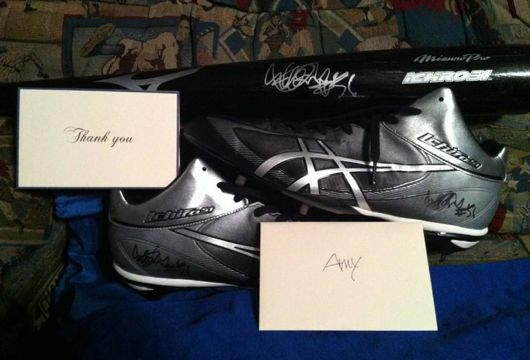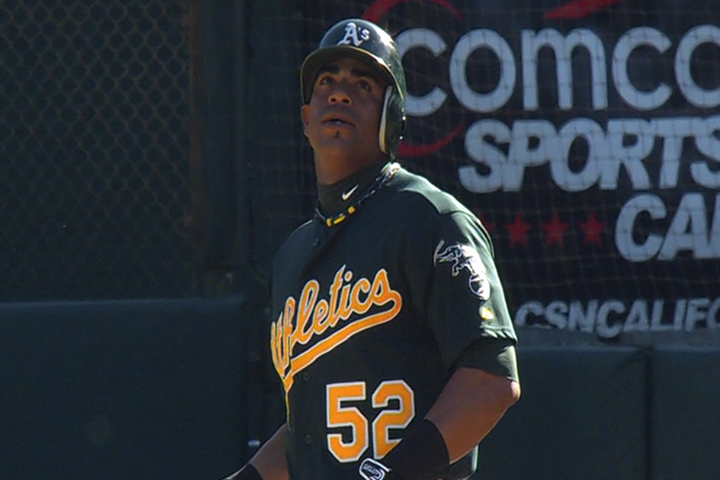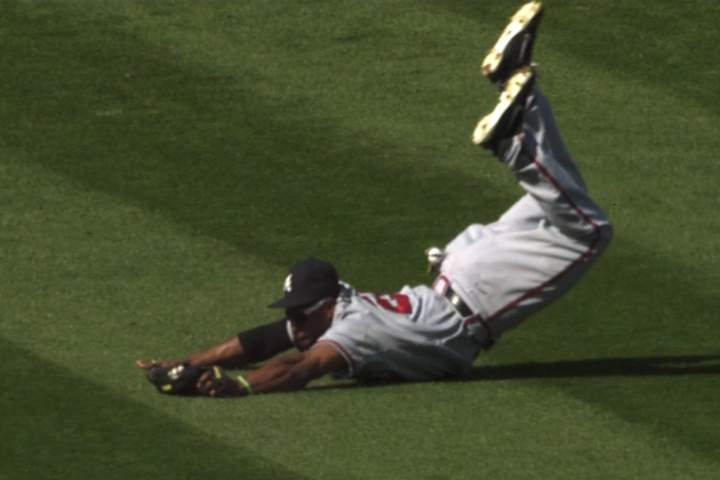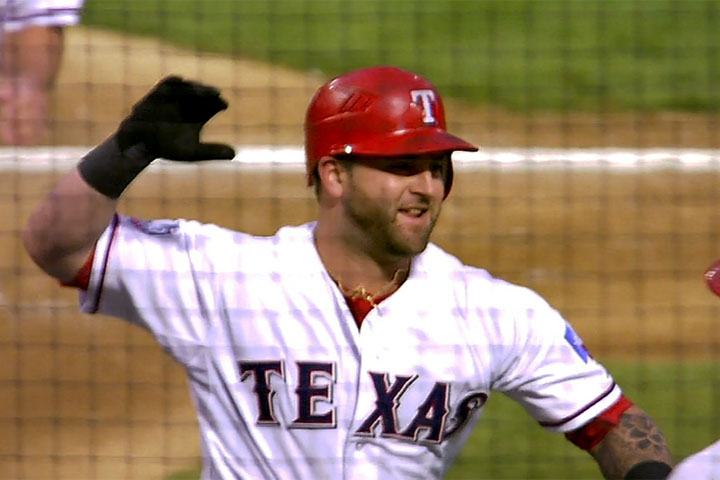Steven Wright: Did the Boston Red Sox Quietly Trade for the Next Tim Wakefield?
By Doug Mead
About the only thing I know about Steven Wright is that he says some things that really make no sense at all.
Things like:
"I drive way too fast to worry about cholesterol."
"Don't you hate when your hand falls asleep and you know it will be up all night?"
"I invented the cordless extension cord."
Oh, wait...we're not talking about that Steven Wright?
My bad.
Fans of the Boston Red Sox probably know the comedian known as Steven Wright very well—he was born and raised in eastern Massachusetts.
But the Steven Wright that the Sox traded for? Not so much.
The one identifying feature about Wright is the fact that he throws a knuckleball, which is what Sox fans can relate to, having watched Tim Wakefield spin his magic at Fenway Park for 17 seasons.
Wright was dealt for Lars Anderson, a once-heralded hitting prospect who never quite developed into the hitter that Boston expected, and was seemingly stuck behind Adrian Gonzalez at first base and in the outfield, where at least six or seven players were listed on the depth chart in front of him.
Wright was drafted by the Cleveland Indians in the second round of the 2006 MLB draft, and when he was drafted from the University of Hawaii, the knuckleball was not a part of his repertoire.
Wright made it to Triple-A in 2009 but was unable to replicate the success he achieved at the lower levels, being sent back down to Double-A ball on two separate occasions.
After finding himself back at the lower levels again in 2010, Wright realized he needed to make a change if he was going to live out his dream of reaching the majors.
He started "messing around" with the knuckleball, originally intending to use it as an out pitch. Now, some two years later, it's his bread and butter.
For his entire major league career, Wakefield thrived with using just one pitch—a knuckleball. His path to the majors was a bit different from Wright's, however. Drafted originally as a first baseman by the Pittsburgh Pirates in 1988, Wakefield quickly found out that hitting at the professional level as opposed to the amateur level was quite a bit different.
Wakefield began tinkering with a knuckleball in 1989 and was converted to a pitcher by the Pirates in 1990, making his pitching debut in Single-A ball. Two years later, Wakefield helped lead the Pirates to the NL East division title, posting an 8-1 record and 2.15 ERA down the stretch, and then winning two games in the NLCS to boot.
Three years later, after floundering while trying to find his way with the knuckler, the Pirates released Wakefield, who was then picked by the Red Sox. Seventeen years later, he retired just six wins shy of the Red Sox record for wins all-time, trailing only the great Cy Young and Roger Clemens.
Before Wright's trade to the Red Sox on Tuesday, Rob Leary, a former Red Sox coach now serving as the Indians' minor league field coordinator, reached out to Wakefield, asking him to have a conversation with Wright.
Now, Wright will have much more access to Wakefield, who now serves as a studio analyst for NESN, the Red Sox's cable television network.
There's no question there was a method behind this trade. Wright was 9-6 with a 2.49 ERA in 20 starts for Double-A Akron, and will now report to the Red Sox Double-A affiliate, the Portland SeaDogs.
Wright sees this as a clear opportunity to realize his dream and follow in Wakefield's footsteps.
"We just talked on the phone a little bit before my last start," Wright said. "It was nice to pick his brain.
Red Sox fans are lamenting the lack of moves made by the Sox front office before the trade deadline, with the Sox pulling off only one deal, picking up reliever Craig Breslow from the Arizona Diamondbacks for Matt Albers and Scott Podsednik.
While the trade for Wright certainly seems minor in comparison, it could pay dividends in the end.
It certainly did in the case of Wakefield.
Boston's newest knuckler pitched well enough in his one start with Double-A Portland, but has done very well while with Triple-A Pawtucket to end the regular season. Wright started four contests for the PawSox, averaging five innings per outing, while keeping the ball in the park, the walks under control, and the ball missing enough bats to strikeout three times as many batters as he walked.
Wright is 27, and no sure thing in the majors, or even in Triple-A.
But knucklers can take some time to get going, if they go at all, and Wright is no exception. Not to get too crazy about what Wright could become, but former Red Sox hurler Wilbur Wood didn't become a successful starter with the knuckler until he was 29 years old and in his dozenth professional season. Tim Wakefield didn't get a stable gig until he was 28, same with Tom Candiotti. R.A. Dickey, the game's current premiere (and okay, only) knuckler, didn't really figure things out until he was in his mid-30s. Wright isn't necessarily going to turn into any of those guys, but there's reason to be patient with knucklers. Just in case they do become one of them.
Red Sox Prospect Steven Wright: Continuing Baseball’s Knuckleball Tradition
Posted on November 2, 2012 by Andrew Martin
Successful knuckleball pitchers are about as common in baseball as a Triple Crown winner, and they are always in danger of going extinct. R.A. Dickey is the only current major league pitcher regularly throwing the pitch, but he could soon have a fellow adherent if Boston Red Sox prospect Steven Wright has anything to say about it.
The right-handed Wright grew up in Moreno Valley, California and attended college at the University of Hawaii. He parlayed an excellent junior season in 2006- where he went 11-2 with a 2.30 and earned second team All-American status- into getting picked by the Cleveland Indians in the second round of that year’s MLB Draft.
Initially a starter, Wright had moderate success in his first few professional seasons before converting to the bullpen, highlighted by a 10-0 record with the Akron Aeros in Double-A in 2009.
Despite possessing a fastball capable of reaching 90 MPH, the Indians approached Wright in 2011 about adopting a knuckleball and returning to the starting rotation. He agreed and held his own, going a combined 4-8 with a 4.58 ERA in 25 games.
Wright was even better in 2012, going 9-6 with a 2.54 ERA in 25 starts with Akron, but received a surprise at the trade deadline when he was dealt to the Red Sox for Lars Anderson. By the end of the year he was pitching effectively in Triple-A, and on the cusp of realizing his dream of playing in the major leagues.
Although it is unlikely he will start 2013 in Boston, Wright represents intriguing pitching depth for the Red Sox; something they sorely lacked this past year. If his knuckleball continues to dance there is a great chance he will be pitching in Boston by the end of the season.
I recently had a chance to interview Wright and find out more how he continues the knuckleball tradition on his way to the majors. Check out more information on his career stats and also follow him on Twitter if you want to follow his progress through next season.
Steven Wright Interview:
Who was your favorite player when you were growing up, and why?: My favorite baseball players were Roger Clemens and Nolan Ryan. I loved the way they pitched with such aggression. You can tell they were extremely focused and confident in their ability and I think that’s the way the game should be played.
What was it like playing baseball for the University of Hawaii?: I did not like playing for UH at first but it was because of being stuck on the island. Once I got to know the island and a great family in Hawaii Kai it made my experience at UH much more enjoyable. The traveling was fun but I think the type of atmosphere that the UH fans bring to the team and stadium really help me prepare to what it is like to play in front of a professional teams crowd.
Can you describe what your draft day experience was like?: Draft day was completely different for me than I would of liked it to be. I was sick with mononucleosis, so I was laying on my parents’ bed listening to the draft with my girlfriend (now wife) Shannon, and when they called my name I was trying to be excited and thrilled but I was so tired and sick from mono that I couldn’t really enjoy it as much as I would of liked. Either way it was a amazing feeling to hear your name called.
Please talk a little bit about the scrutiny and expectations you encountered as such a highly drafted prospect.: I honestly didn’t feel much. I know it was there with the fans and some of the other players, but I put more pressure on myself than anything in the media or in the front office. I felt that I needed to perform because the Indians thought so highly of me to pick me with their second pick. I did not get caught up in the hype of being such a high pick. I figured I cannot control what is being said, I can only control myself and what I do to prepare and perform.
How and when did you decide to adopt the knuckleball as your primary weapon?: I started throwing the knuck when I was 9 years old. Frank Pastore, who used to pitch for the Reds, threw one back to me and after that I was intrigued on how you can throw a ball with no spin. So I messed around with it and in 2010 I struggled in Triple-A, and when I got sent to Akron I was messing around in New Hampshire and Greg Hibbard and Jason Bere saw it and talked to me a little about it and suggested I use it as a out pitch. I did and it just progressed to what I am doing today.
Who has been your primary knuckleball tutor and how often do you have to touch base?: I have been lucky; I have worked with Tom Candiotti and Charlie Hough. I’ve talked to Tim Wakefield and R.A. Dickey. I even got to watch Charlie Haeger throw a bullpen last year and got to pick his brain a little. But the guys I go to with the most is kind of equal between Candiotti, Hough, Dickey, and Wakefield. I have used them all about the same. I try, when I have a question, to send a mass text to all and see what their adjustments or recommendations are and then I try them all and see which one works for me.
What was it like being traded to the Red Sox this past season, and what were the ensuing 24 hours like for you?: It was exciting, especially for me, because I was playing for Akron and we were in Portland, which is the Red Sox Double-A team. When Chris Tremie told me I had been traded I just packed up and walked over to the Portland clubhouse. The next 24 hours were crazy because I was now in the Portland dugout watching us play against Akron. It was kind of weird and exciting at the same time.
What is something about your career that you would like to do differently if you had the chance?: Right now I would say start throwing the knuckleball earlier. I think one thing is just to concentrate more on the working out and nutrition earlier in my life, like high school time. It’s such an important aspect of being a professional because of the long hours at the field and on the road, and just the season in general. The concentration on taking care of your body and learning about the nutrition side early on in life will help put yourself in a position to perform at your highest ability more times than not










